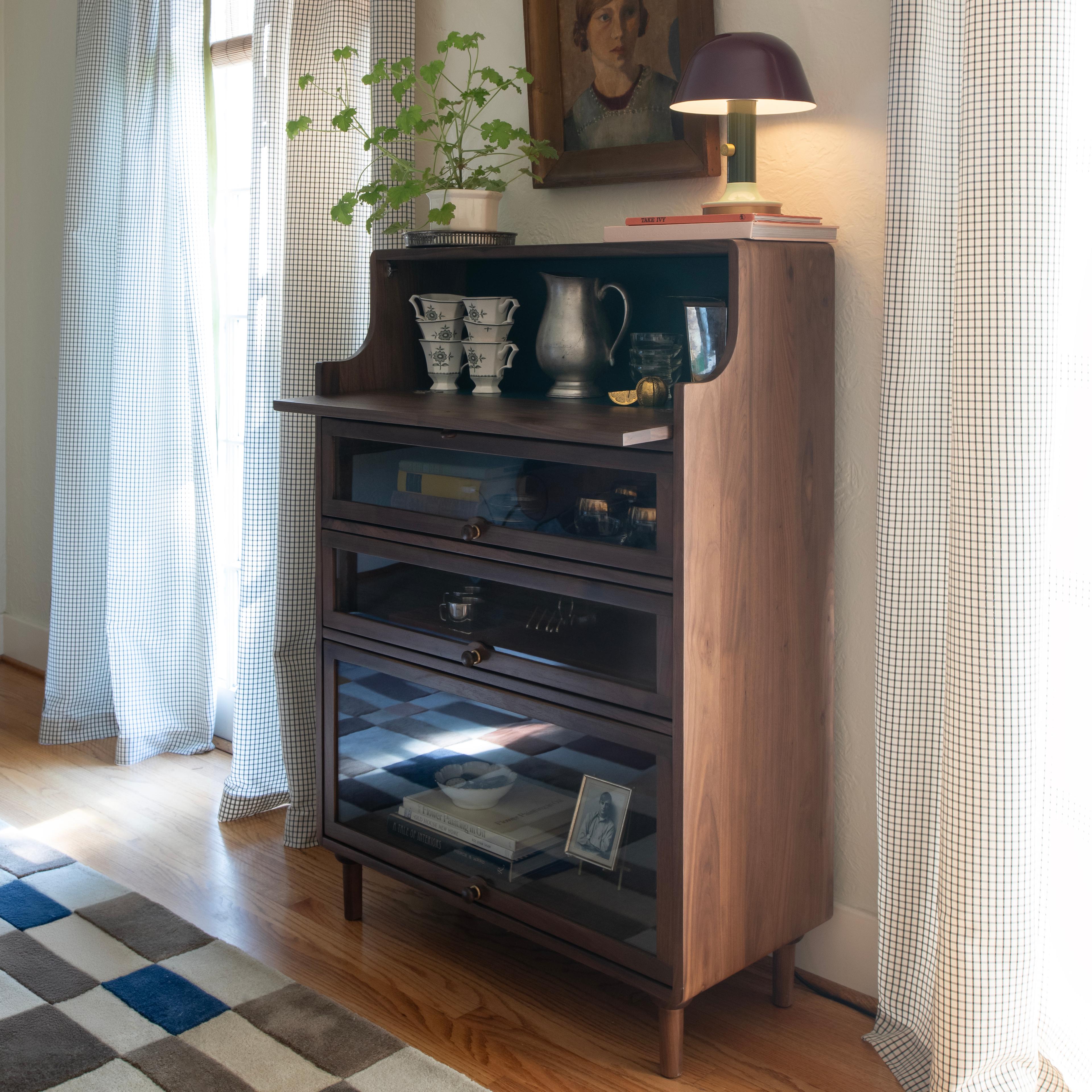Directory of Design: The History of Collections and Curio Cabinets
ByChelsea Harris
Published On
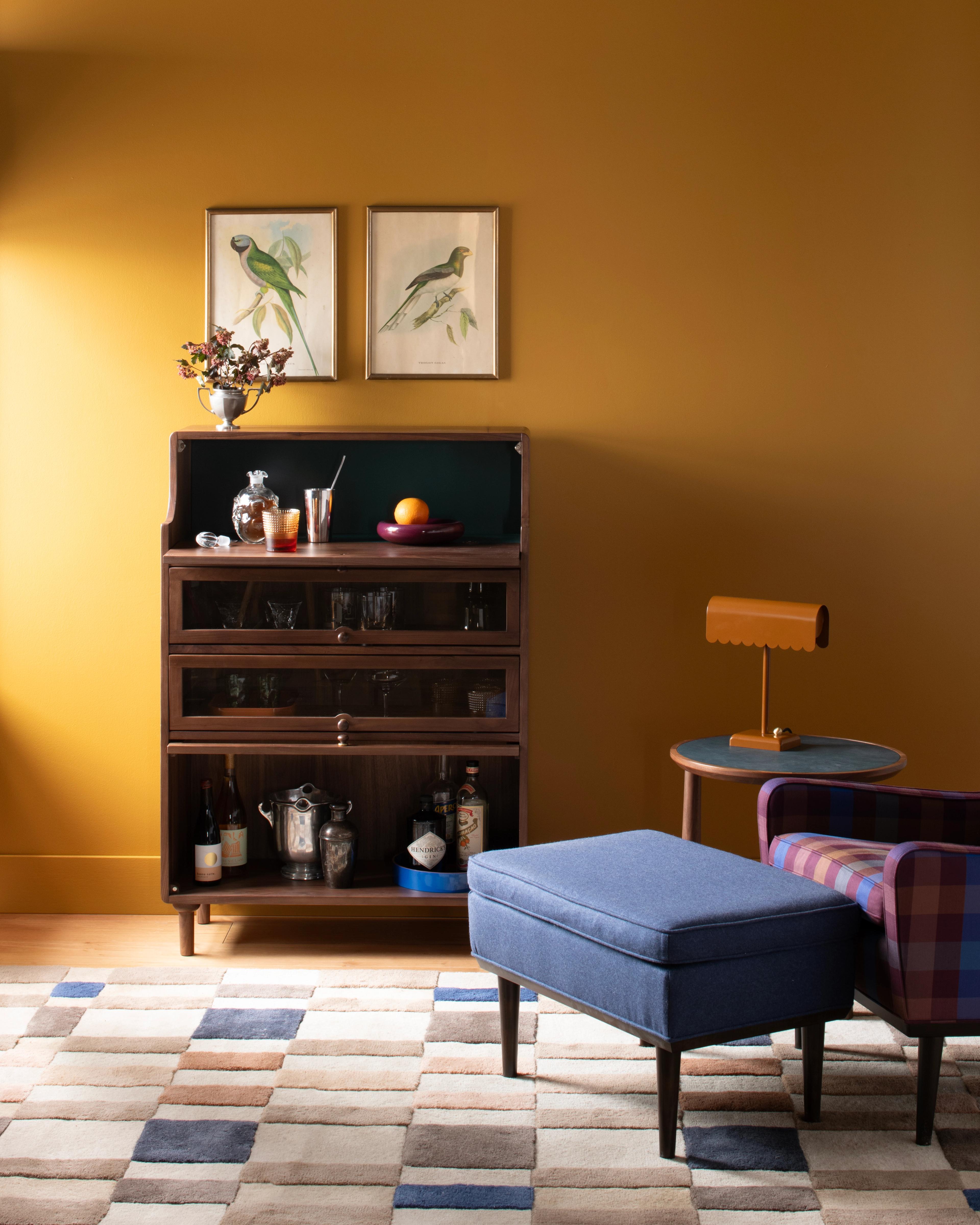
Some objects come with a built-in sense of nostalgia. For the design team, the idea for the Peggy Curio Cabinet began with a simple question: what if we took the time-honored barrister cabinet and reimagined it for today, not just as a home for books, but for any little treasure worth displaying?
“Our fall/holiday concept celebrates collecting and displaying the little treasures you collect,” the design team shared. “We looked into east coast academic spaces, libraries, and schools, all of which have built-in barrister cabinets that protect expensive books from dust and damage, but still allow the contents to be seen.” That mix of utility and elegance set the tone for the piece, grounding it in history while opening it up to reinterpretation.
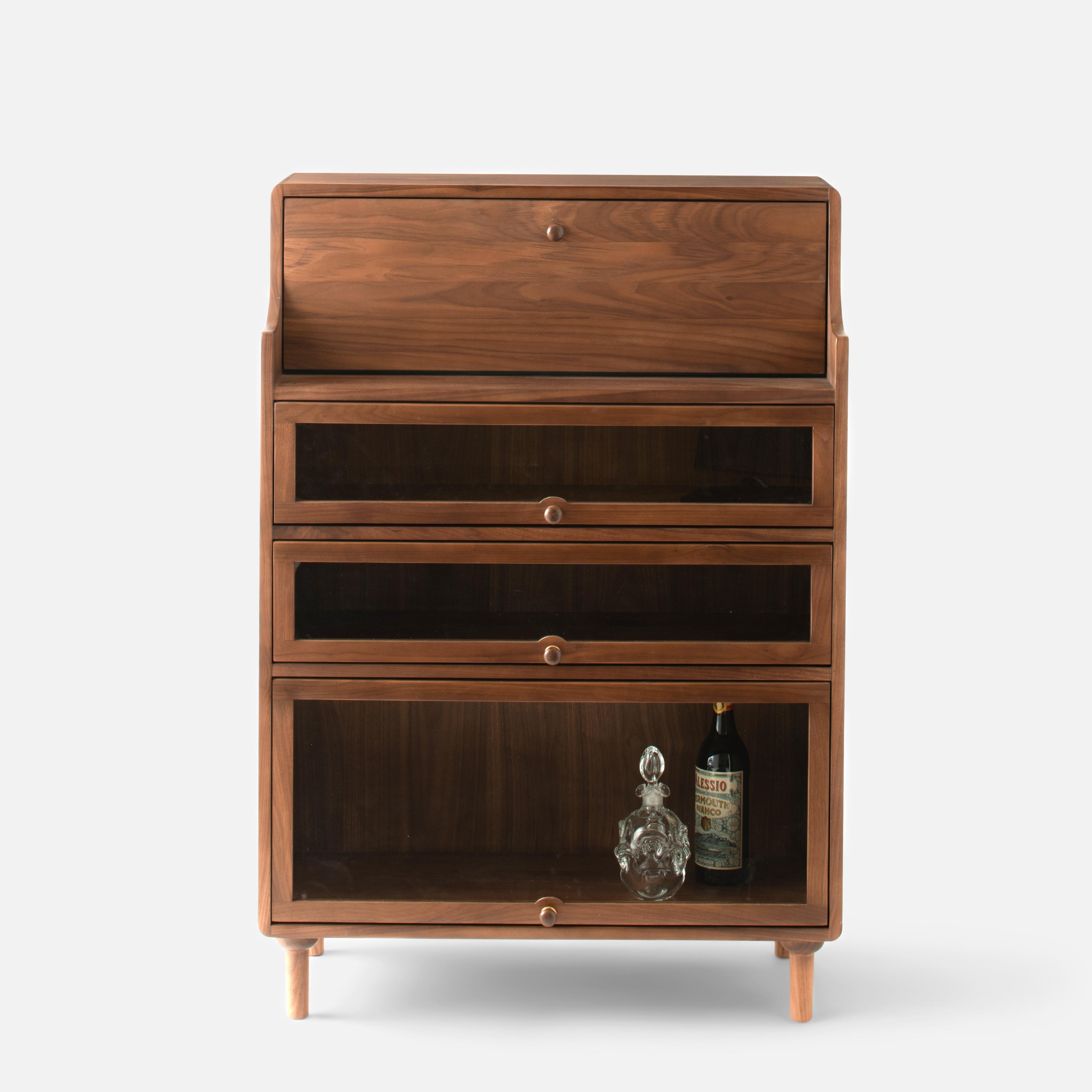

Let’s take a look back: Barrister cabinets may have started out in serious spaces like law offices and libraries, but their clever design made them a staple far beyond the courtroom. Popular in the late 19th and early 20th centuries, these modular, glass-front cases were built to protect prized law books from dust while keeping them easy to grab (thanks to those signature lift-and-slide doors). Often made from rich oak or mahogany, they were as sturdy as they were stylish. Over time, their clean lines and refined feel found a place in homes, schools, and anywhere that prized a bit of old-school charm. Fast forward to today, and it’s easy to see why we’re still obsessed: equal parts practical and polished, the barrister cabinet is the kind of classic that’s just begging for a modern twist.
When it came to the creation of Peggy, there was also a personal memory that helped spark the design. “Growing up, my mom used an antique barrister cabinet to store her extensive collection of teacups. We liked that it really shows off whatever collection you have,” says Senior Designer Shannon. It’s this feeling, equal parts protection and pride, that gives Peggy her emotional pull.
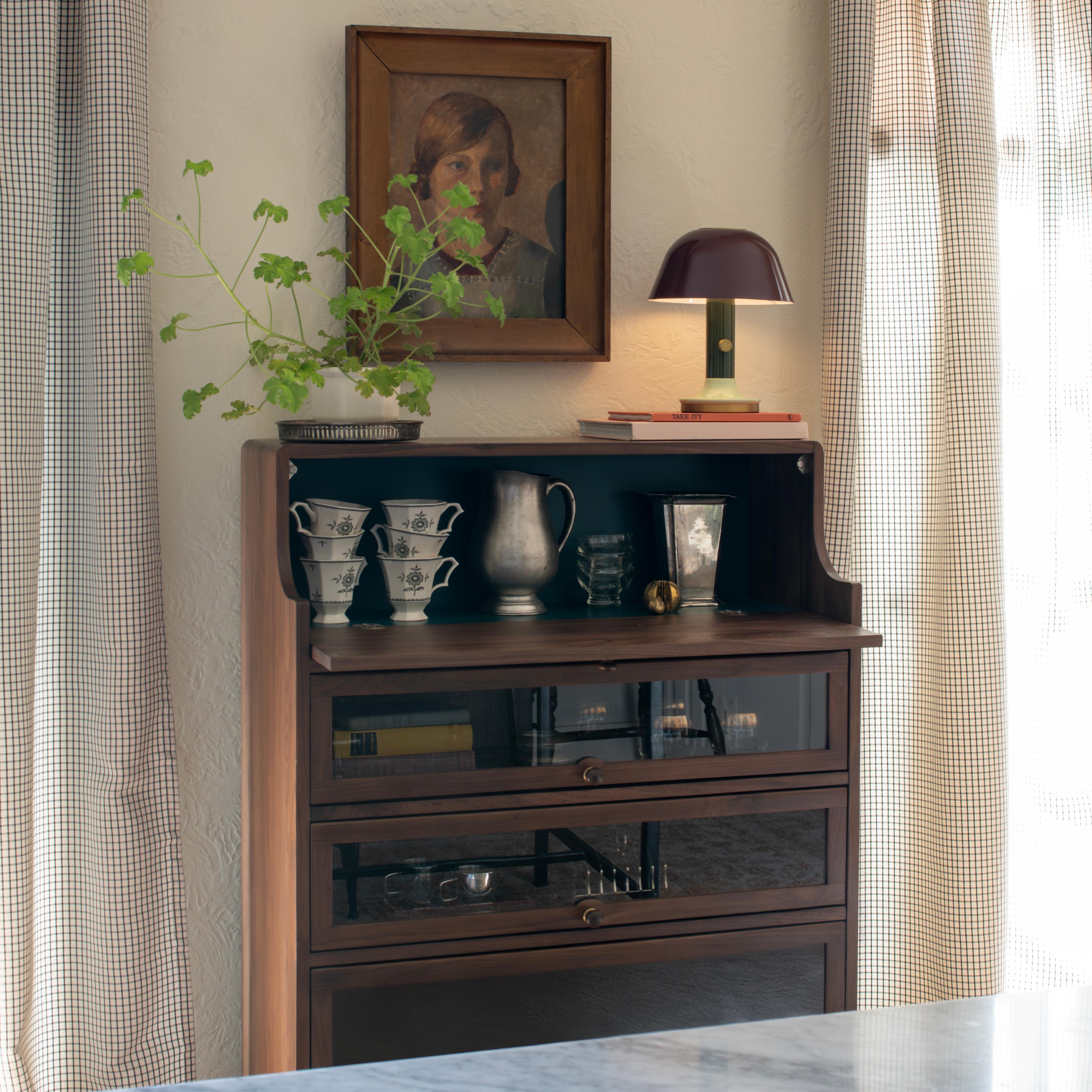
Functionally, classic barrister cabinets served as inspiration too. “The use of the glass doors follows the same design as antique versions, where the door lifts and can slide in to grab whatever you need.” But Peggy bends the rules in all the right ways. “Typically these cabinets have shelves all the same height, but we broke that rule to allow a bit more flexibility in what you want to display. We also added a little closed section so you can hide away some items.”
That fold-down panel, in particular, adds a charming element of surprise. “There is a surprise and delight aspect of the concept. The fold down style feels reminiscent of a secretary desk where you have function in a small space. I love that there is still a place to hide away items I don’t always want out. I also love that when the door folds down it creates a larger level surface if you need a quick desk or an area to stage a bar. We chose the color because it reminded us of leather that would have been used on desks or writing surfaces.”
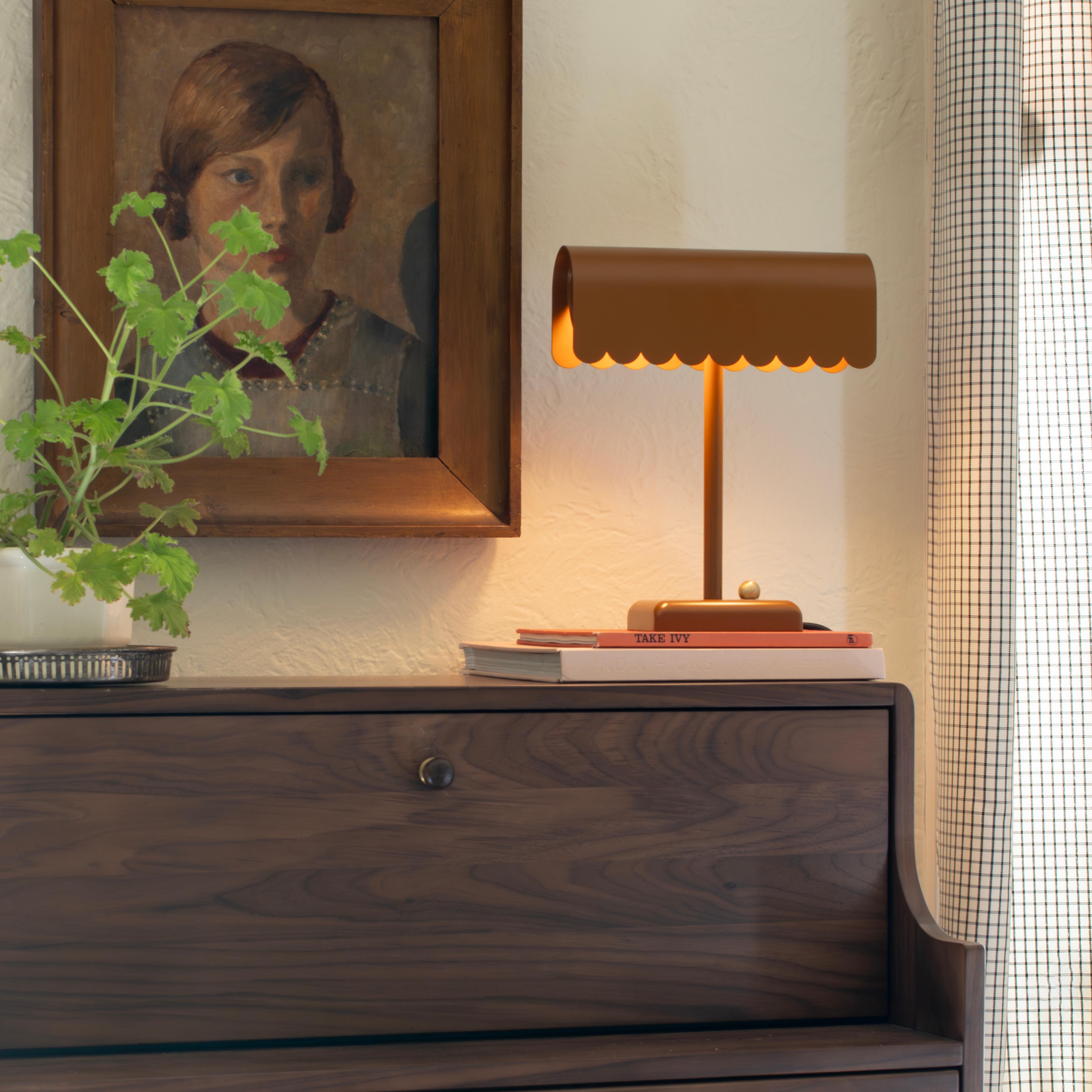
Another standout detail? The hardware: subtle, but full of meaning. “The knobs with the brass backplates are my favorite. They are small and delicate. I love that we were able to add the little arc in the wood frame for the door that grounds them.” That kind of attention to detail extends to the circular brass escutcheons behind each knob, a thoughtful nod to the locking mechanisms found on antique cabinets. “Because traditionally these cabinets would have been used to store expensive books, sometimes they had locks. We wanted to nod to that function by adding a rounded brass escutcheon behind each knob.”
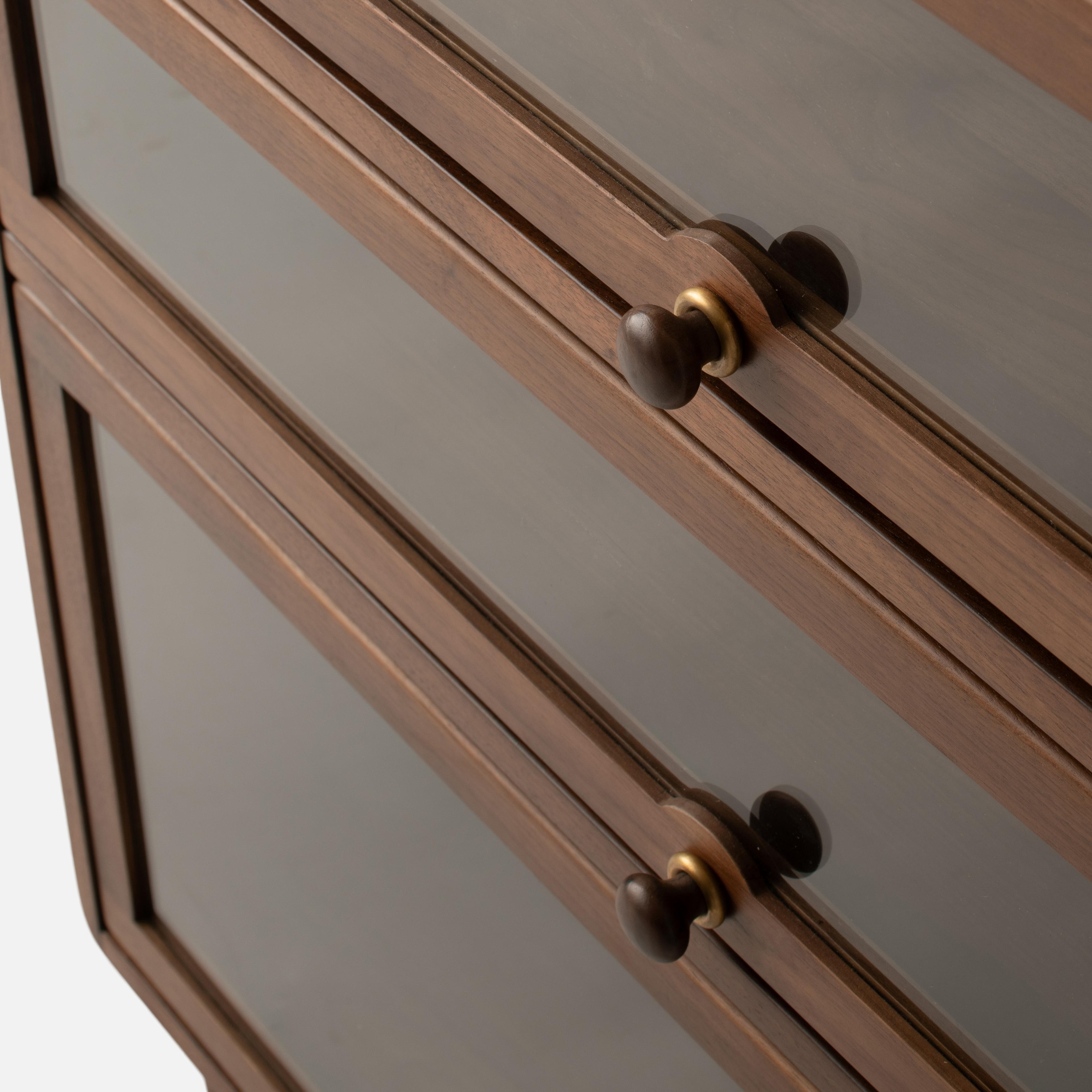
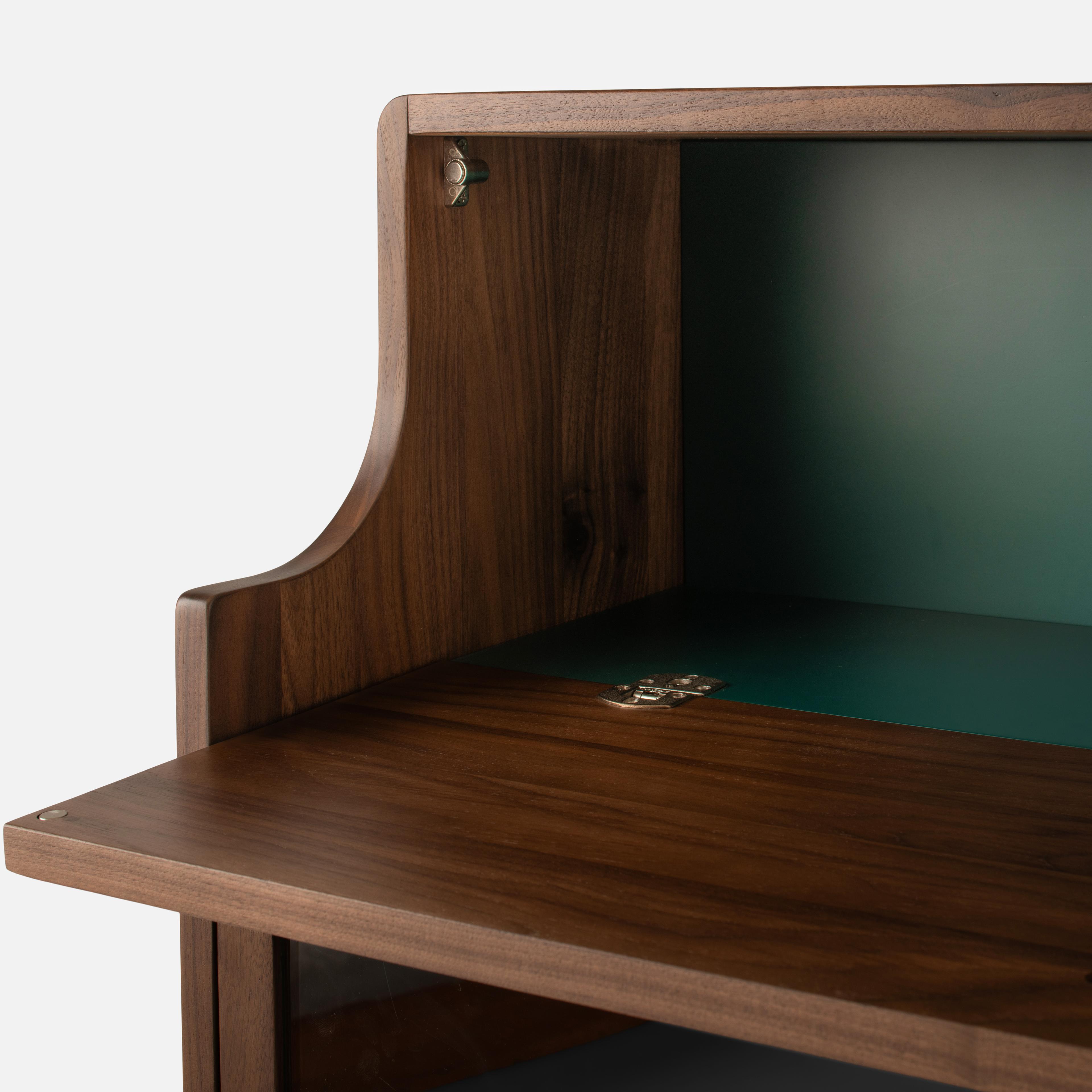
So where did the name “Peggy” come from? Like many of our pieces, it has a story. “Peggy is actually the name of my Grandma June’s best friend who lived in Asheville,” says Senior Designer Shannon.
Material choice also played a big role in the final feel of the piece. “It felt appropriate as we designed around academic spaces in the Northeast. They usually are much moodier and we wanted that to translate here. Although we think it would be just as beautiful in oak…hint hint.”
Charming, functional, and full of personality, the Peggy Curio Cabinet is more than just a place to store things, it’s a space to tell your story.
